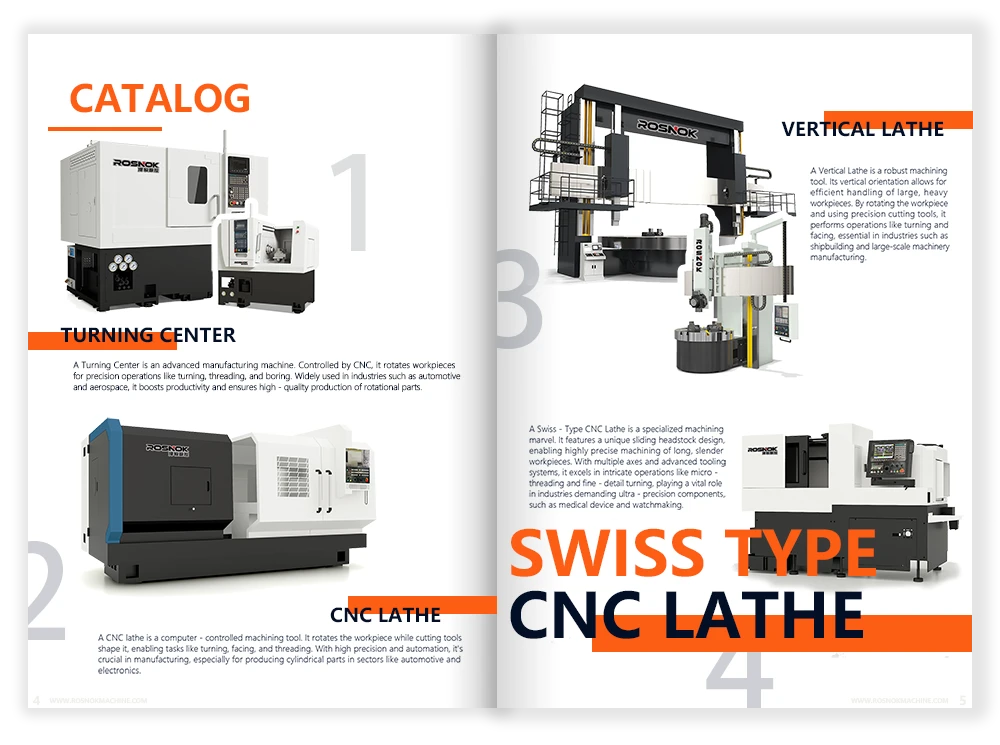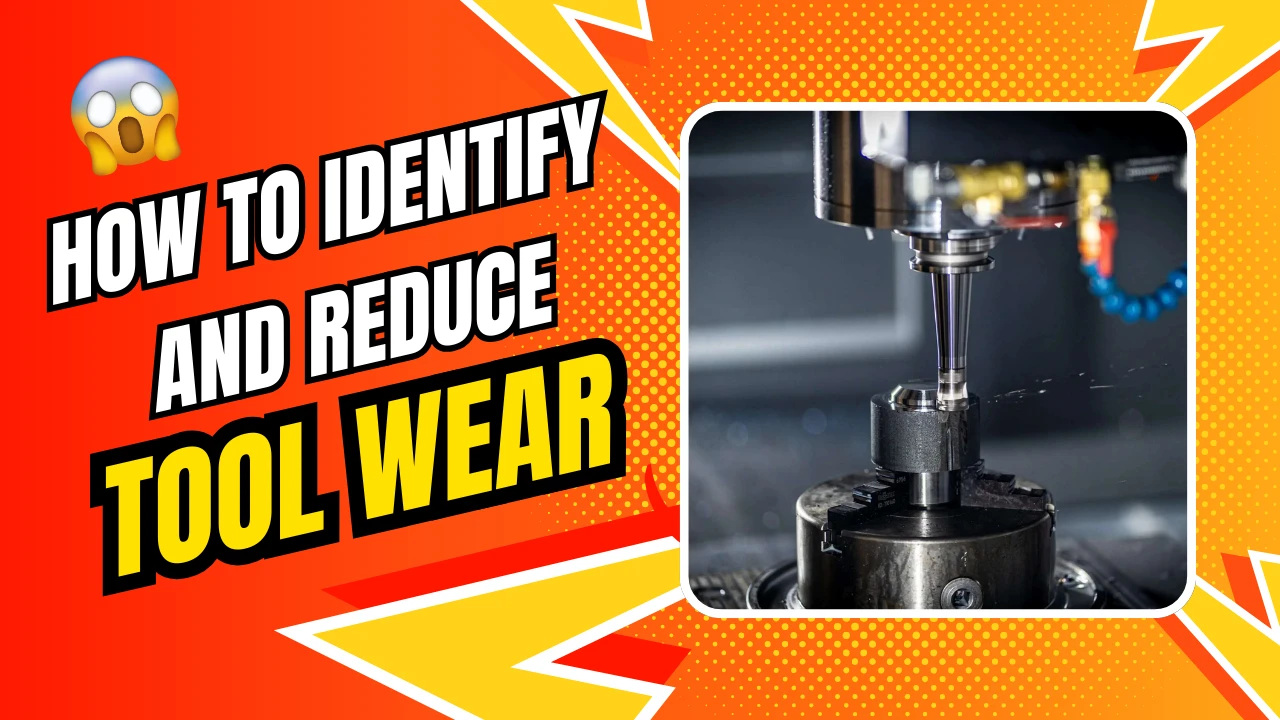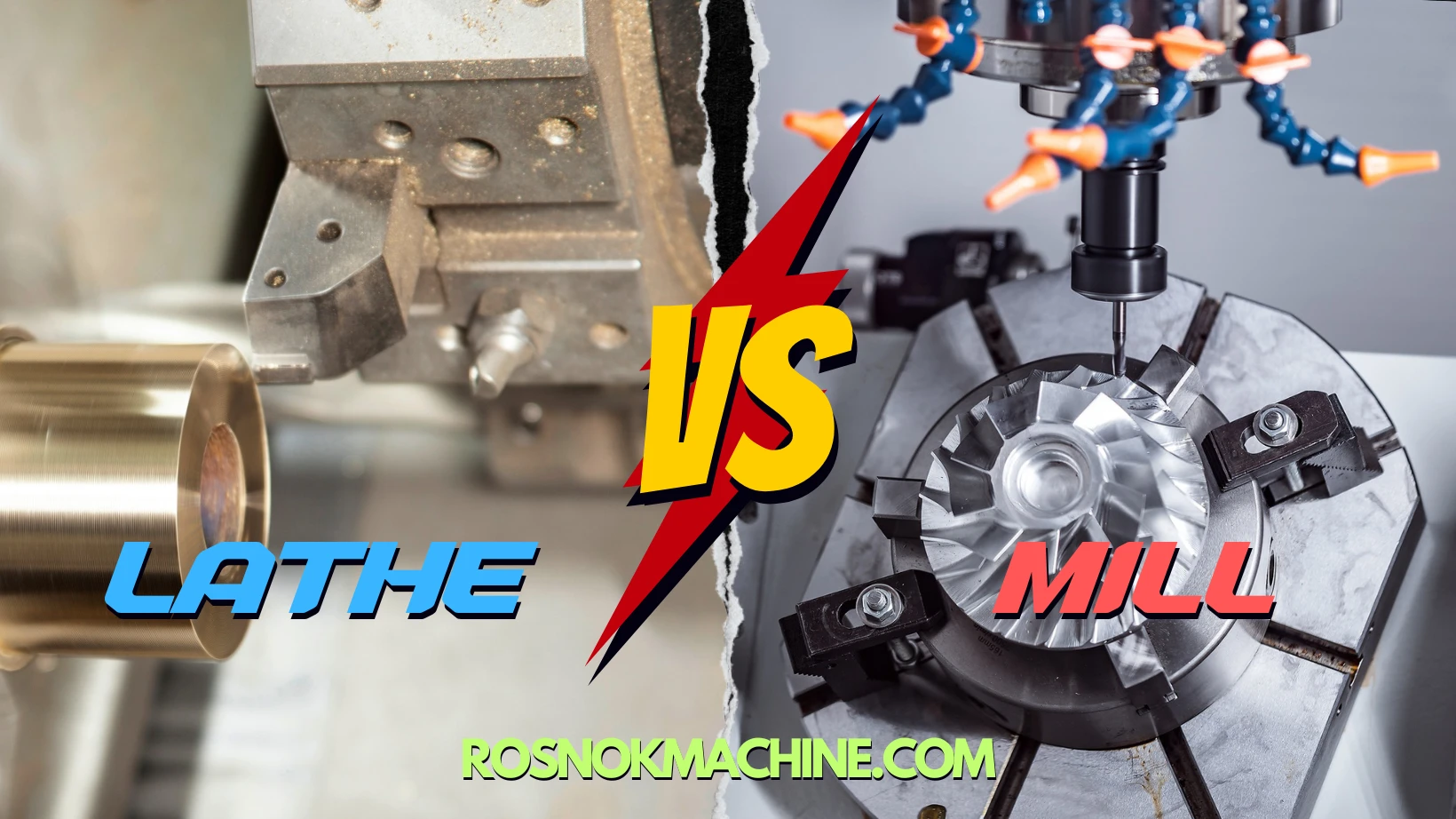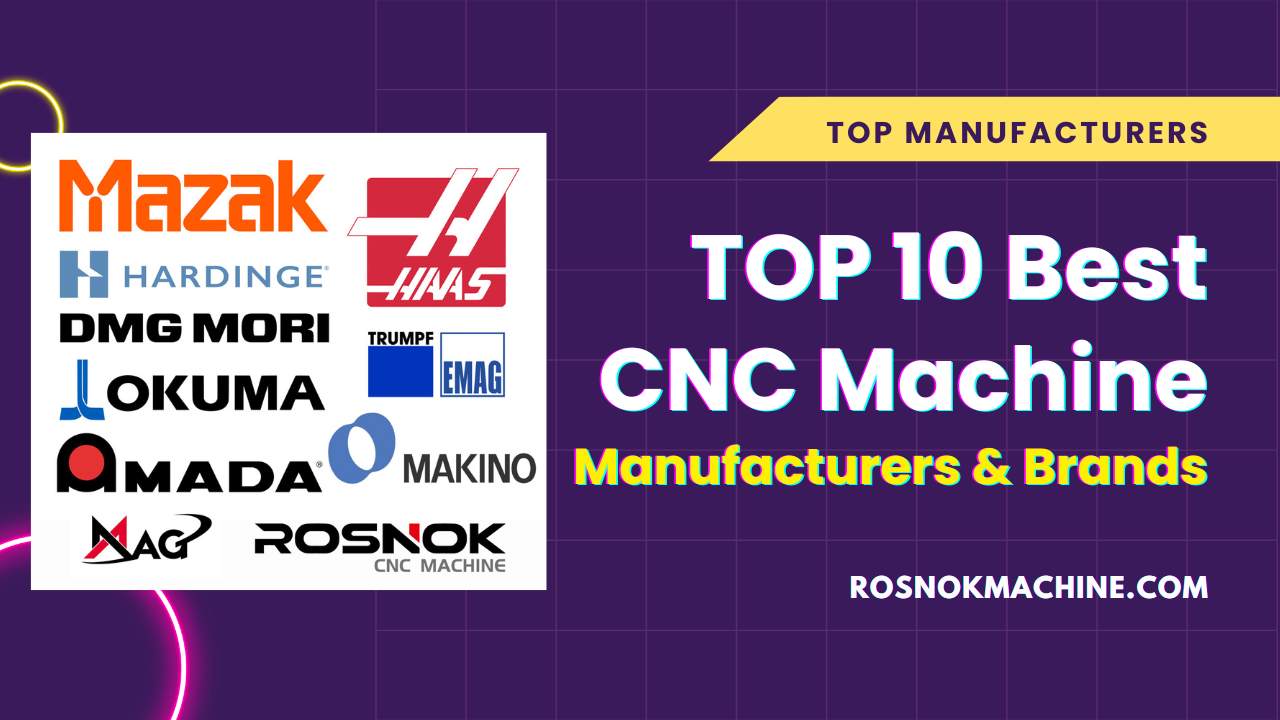In the fast-paced world of CNC machining, tool wear is an inevitable challenge that every machinist faces. From small workshops to large manufacturing plants, worn tools can silently erode precision, reduce efficiency, and compromise product quality. But how can you detect tool wear early enough to prevent costly mistakes?
Unchecked tool wear doesn’t just shorten tool life—it disrupts the entire production chain. It leads to flawed components, unexpected downtime, higher scrap rates, and rising operating costs. Even a small delay or defect can impact delivery schedules, damage customer trust, and weaken your competitiveness in today’s demanding market.
The good news is that by learning how to identify tool wear early, understanding its types and consequences, and applying proven reduction methods, you can maintain precision, extend tool life, and boost productivity. In this article, we’ll explore practical strategies and insights to keep your CNC machining processes running at peak performance.
What is Tool Wear?
Tool wear refers to the gradual loss of material from a cutting tool due to the mechanical, thermal, and chemical stresses it experiences during machining. In CNC machining, tool wear is inevitable because the cutting edge is constantly in contact with hard workpiece materials under high pressure and speed. Over time, this interaction causes the cutting edge to lose sharpness, altering its geometry and reducing its cutting ability.
Industry standards, such as ISO 3685, define tool wear as the measurable loss of tool material that limits its effectiveness. Typically, the end of a tool’s useful life is determined when wear reaches a critical threshold, such as a flank wear land of 0.3 mm for turning tools. Beyond this point, machining quality and efficiency deteriorate significantly, and replacement becomes necessary.
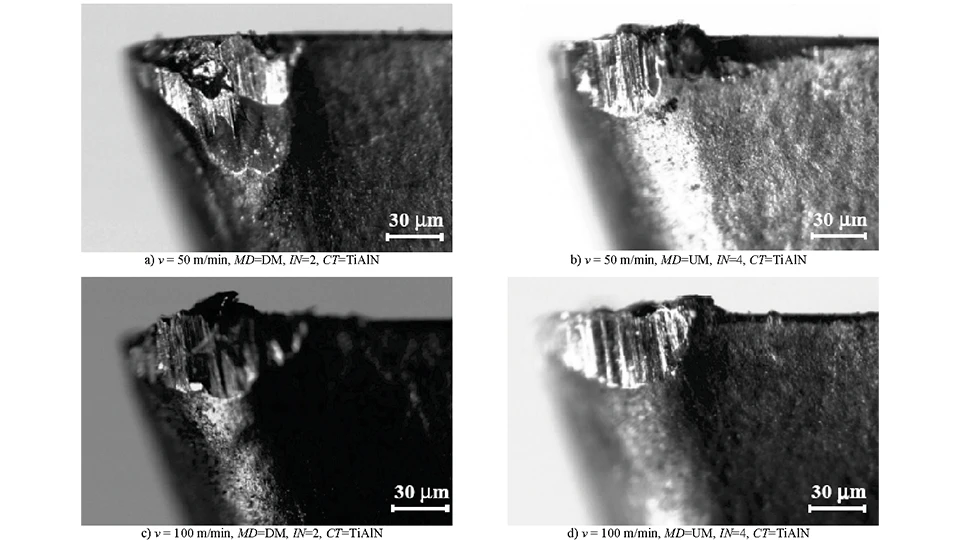
Types of Tool Wear
Cutting tools in CNC machining experience different wear patterns depending on cutting conditions, workpiece material, and tool properties. Each wear type has distinct mechanisms and effects on machining performance. Understanding these categories provides the foundation for accurate diagnosis and targeted improvement.
Flank Wear
Flank wear develops on the clearance face of the tool due to abrasive contact between the cutting edge and the workpiece surface. Hard particles within the workpiece act like abrasives, gradually eroding the tool material. At the same time, friction generates heat, which accelerates material removal from the tool flank. As wear land grows, cutting forces increase, machining temperature rises, and dimensional accuracy begins to decline. This is the most common and predictable form of tool wear in CNC machining.
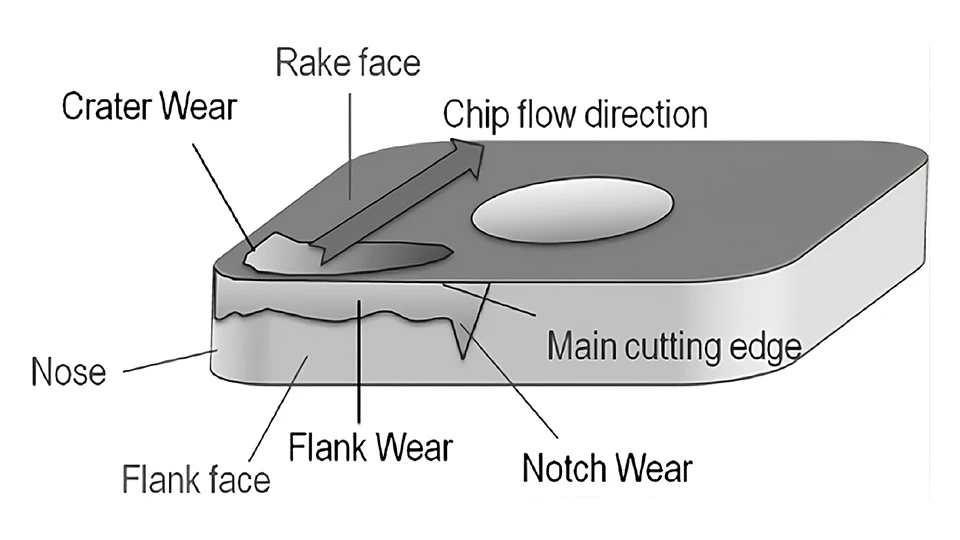
Crater Wear
Crater wear appears as a concave depression on the rake face of the tool. It occurs when high cutting temperatures promote diffusion and adhesion between tool and chip materials. The flowing chip mechanically scrapes away tool material while chemical reactions further weaken the rake surface. Over time, the crater deepens and approaches the cutting edge, reducing tool strength and sometimes leading to edge failure. Crater wear is especially common when machining high-strength steels at elevated speeds.
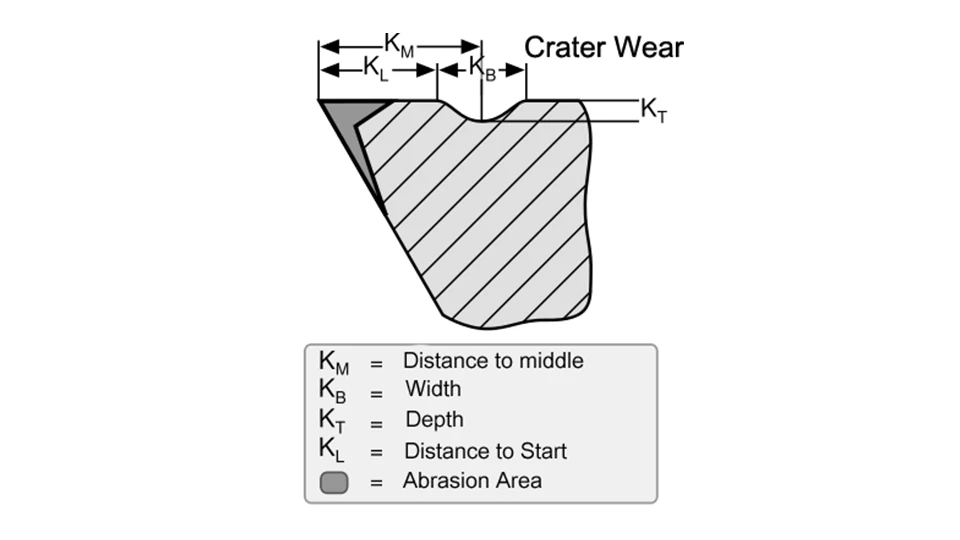
Built-up Edge (BUE)
Built-up edge occurs when ductile workpiece material welds to the tool tip under pressure and temperature. Layers of adhered material accumulate on the cutting edge, altering its geometry and effectively changing rake angle. This temporary edge may detach unpredictably, sometimes tearing off tool material in the process. BUE often produces unstable cutting conditions, poor surface finish, and dimensional variation. Its formation is strongly influenced by workpiece material ductility and cutting speed.
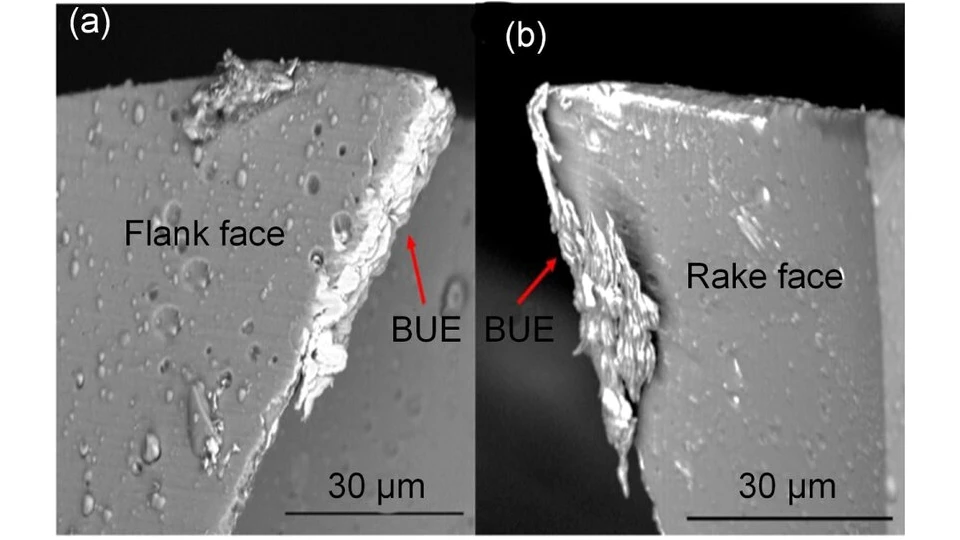
Notch Wear
Notch wear forms as localized damage along the depth-of-cut line where the cutting edge repeatedly enters and exits the workpiece surface. Work-hardened layers or abrasive inclusions concentrate wear at this boundary zone. Stress concentration and cyclic loading accelerate the notch formation compared to other regions of the cutting edge. Once a notch develops, it generates vibration, increases cutting forces, and destabilizes the tool-workpiece contact. If unchecked, it can propagate into chipping or even full breakage.
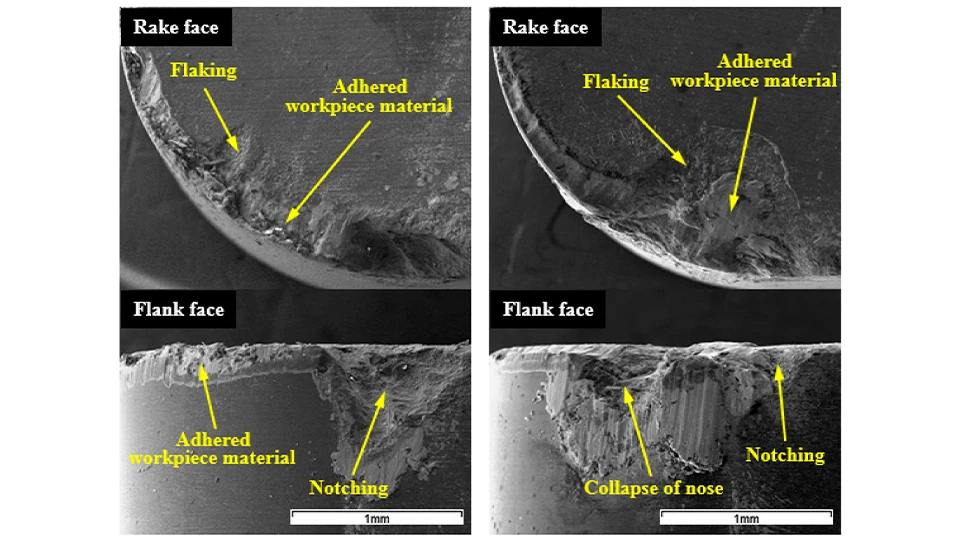
Chipping
Chipping is characterized by small cracks or fragments breaking away from the cutting edge. It often initiates from microstructural defects in the tool material or stress concentrations at sharp corners. Interrupted cutting, chip hammering, or sudden load changes provide the impact energy that drives these microfractures to propagate. Unlike gradual wear, chipping occurs in discrete events, leaving irregular edges that degrade surface finish. Over time, repeated chipping weakens the tool and accelerates other wear modes.
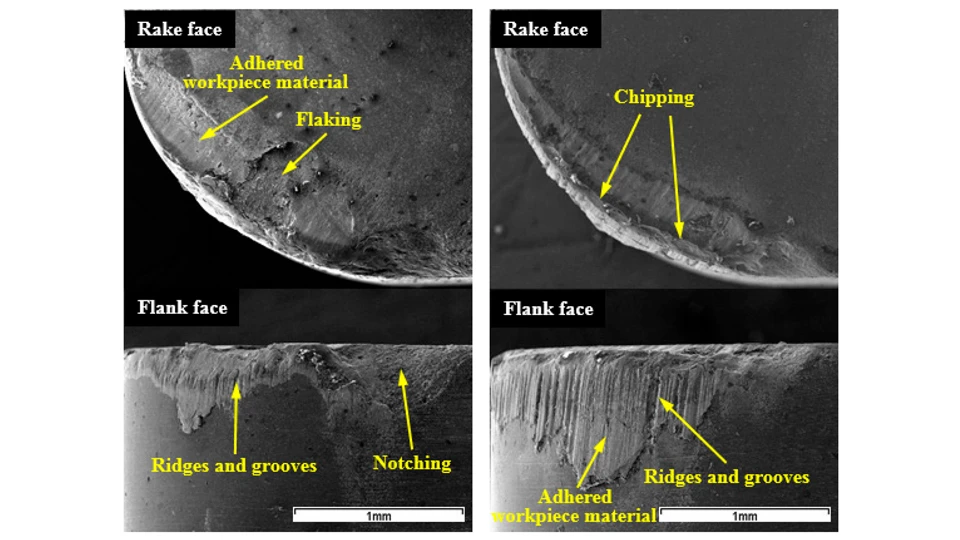
Breakage
Breakage is the most catastrophic form of tool failure, in which a large part of the cutting edge or even the entire insert fractures suddenly. This usually follows accumulated stresses, undetected micro-chipping, or excessive cutting loads. In high-volume production, a single breakage event can destroy not only the workpiece but also cause secondary damage to spindles and fixtures, resulting in hours of downtime. Unlike gradual wear modes that provide visible signs, breakage happens abruptly, leaving almost no time for corrective action.
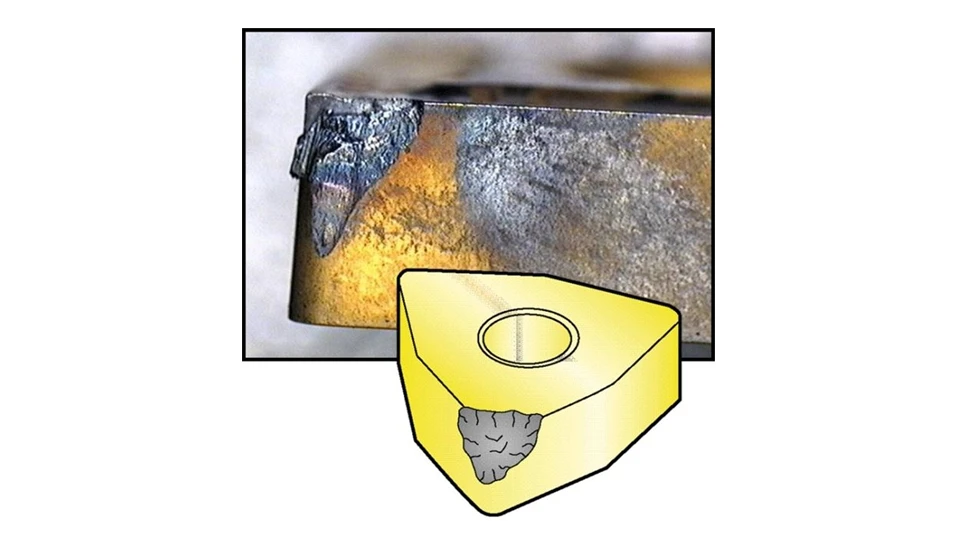
Thermal Cracking
Thermal cracking manifests as fine cracks running perpendicular to the cutting edge. It develops due to cyclic thermal stresses caused by rapid heating and cooling of the tool surface. For example, when coolant intermittently strikes a hot cutting zone, the resulting temperature gradients induce tensile stresses that exceed the material’s strength. Repeated cycles cause these microcracks to deepen and spread. Thermal cracking weakens the edge structure and often leads to secondary chipping or breakage.
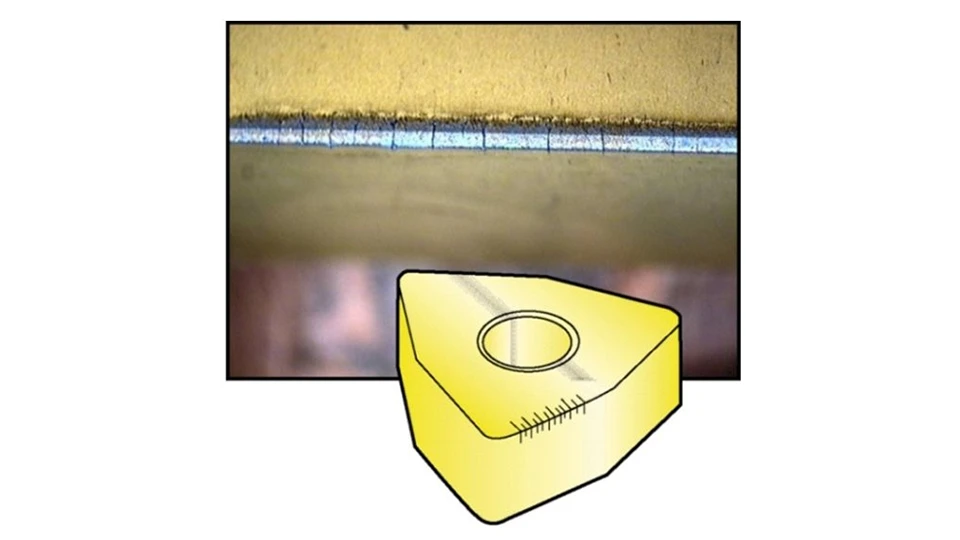
Plastic Deformation
Plastic deformation occurs when the cutting edge softens under extreme heat and mechanical load, causing the tool to deform permanently. Instead of chipping or fracturing, the material flows plastically, blunting the cutting edge and reducing effective rake angle. This is common when machining heat-resistant alloys at high speeds where temperatures approach the softening point of the tool material. Once plastic deformation sets in, cutting forces rise sharply, burrs appear, and tool effectiveness drops rapidly.
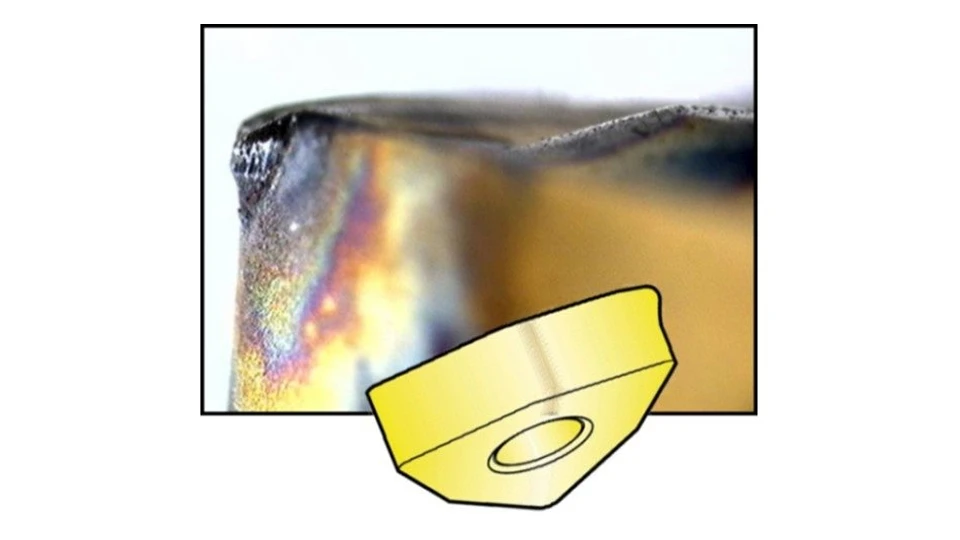
How to Identify Tool Wear Early
Early identification of tool wear is critical to avoid unexpected failures and maintain consistent quality. Instead of waiting for visible damage, machinists can rely on subtle signs and measurable indicators that reveal tool degradation at an early stage. These signals help schedule timely tool changes and prevent costly downtime.
- Surface finish changes – A worn tool often leaves rougher surfaces, visible scratches, or chatter marks on the workpiece.
- Dimensional inaccuracy – Gradual loss of sharpness causes deviations from tolerance, especially in precision parts.
- Increased cutting forces and spindle load – Monitoring power consumption or spindle torque can reveal higher resistance caused by wear.
- Abnormal vibration and noise – Chipping and notch wear often generate irregular sounds or tool chatter.
- Temperature rise – Excessive heat near the cutting zone is a sign that friction and wear are increasing.
- Monitoring systems – Advanced CNC setups may use sensors, acoustic emission, or vision systems to track wear progression in real time.
Identifying tool wear before it escalates allows manufacturers to maintain accuracy, protect equipment, and extend tool life.
Consequences of Tool Wear
Tool wear does not only shorten tool life—it directly impacts quality, efficiency, and overall manufacturing costs. As wear progresses, the cutting edge loses stability, and this creates a series of negative consequences across production.
Reduced Machining Accuracy
As the cutting edge wears, it loses its original geometry and sharpness. This results in dimensional deviations, especially critical for precision components. Parts may fail to meet tolerance requirements, leading to rework or rejection.
Poor Surface Finish
Flank wear and built-up edge reduce the tool’s ability to produce smooth surfaces. Workpieces show rough finishes, scratches, or chatter marks, directly affecting product quality and customer satisfaction.
Higher Energy Consumption
Worn tools generate more friction and resistance during cutting. This increases spindle load, tool pressure, and overall power consumption. Over time, higher energy usage raises operating costs and reduces process efficiency.
Unexpected Downtime
Severe wear or sudden tool breakage can halt machining operations without warning. Such interruptions disrupt production schedules, lower productivity, and create cascading delays across the workshop.
Rising Operational Costs
Tool wear leads to frequent tool changes, higher scrap rates, and additional maintenance. These hidden costs accumulate quickly, reducing profit margins and affecting return on investment in machining operations.
Equipment Stress
Worn tools transmit abnormal loads and vibrations to the machine tool. This accelerates wear of spindles, guideways, and bearings, shortening machine lifespan and increasing the risk of costly repairs.
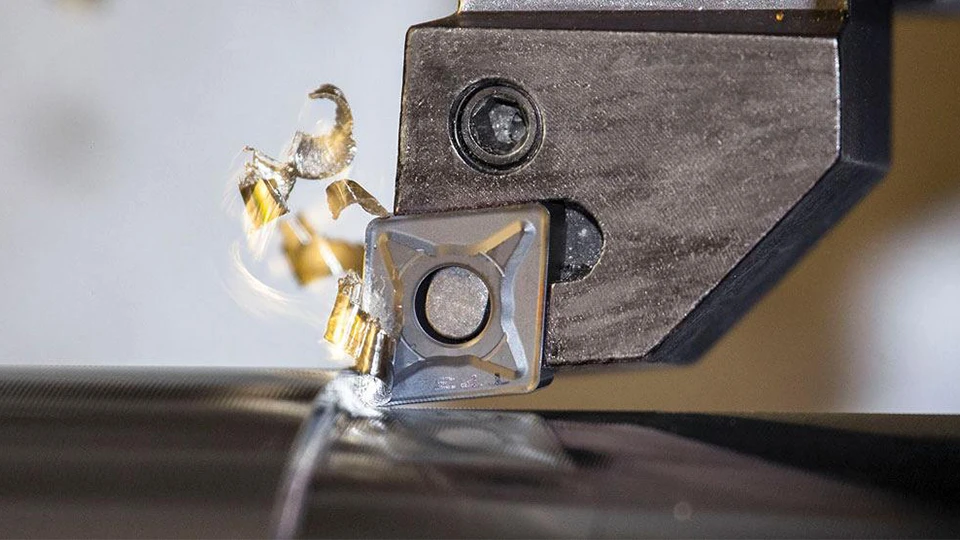
Causes of Tool Wear in CNC Machining
Tool wear develops under the combined influence of mechanical, thermal, and chemical stresses. In CNC machining, several key factors accelerate this process, each linked to cutting conditions, materials, and machine performance. Understanding these causes helps manufacturers control wear more effectively.
Cutting Parameters
High cutting speeds, aggressive feed rates, and large depths of cut increase friction and heat at the tool–workpiece interface. These conditions accelerate flank wear, crater wear, and even plastic deformation. Improper parameter selection is one of the most common reasons for premature tool failure.
Workpiece Material
Hardness, toughness, and abrasiveness of the workpiece material directly influence tool life. For example, hardened steels and nickel-based superalloys generate extreme cutting temperatures, while abrasive composites cause rapid flank wear. Ductile materials, on the other hand, promote built-up edge formation.
Tool Material and Coating
The durability of a cutting tool depends heavily on its substrate and coating. Carbide, ceramic, CBN, or PCD tools each respond differently to stress and heat. Lack of suitable coatings (e.g., TiAlN, AlTiN) reduces resistance to wear, diffusion, and thermal cracking, leading to shorter tool life.
Cooling and Lubrication
Insufficient or inconsistent coolant supply creates high thermal loads on the cutting edge. Without proper lubrication, friction intensifies, resulting in rapid flank wear, built-up edge, and thermal cracking. Coolant strategy is therefore a decisive factor in wear progression.
Machine Condition
Tool wear is also influenced by the rigidity and precision of the CNC machine. Poor spindle alignment, unstable fixtures, or worn guideways introduce vibration and uneven loading on the cutting edge. These conditions accelerate chipping, notch wear, and eventual tool breakage.
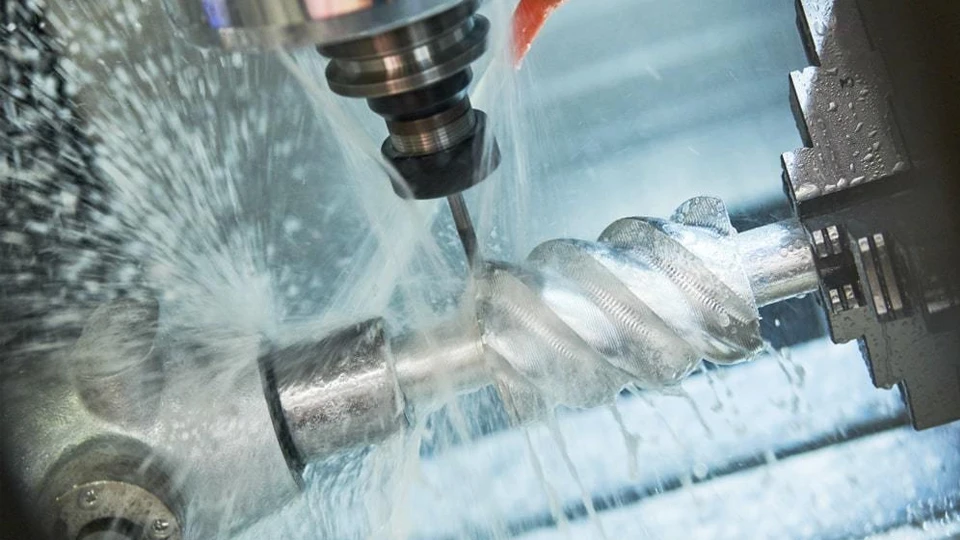
Methods to Reduce Tool Wear
While tool wear cannot be avoided entirely, it can be controlled and significantly slowed down. By combining the right tool materials, optimized cutting parameters, proper cooling, and effective tool management, manufacturers can extend tool life and maintain consistent machining quality.
Tool Selection
Choosing the right tool material and coating is the first step in reducing wear. Carbide tools with TiAlN or AlTiN coatings improve resistance to heat and diffusion, while CBN or PCD tools are suited for hardened steels and non-ferrous alloys. Proper matching of tool grade to workpiece material ensures maximum durability. For example, CBN tools are widely used in hard turning of automotive shafts above 55 HRC, where carbide would fail prematurely.
Cutting Parameter Optimization
Adjusting speed, feed, and depth of cut has a direct impact on wear progression. Excessive speeds lead to crater wear and plastic deformation, while overly aggressive feeds increase chipping and breakage risks. Optimized parameters balance productivity with tool longevity, reducing overall machining costs.
Cooling and Lubrication
Consistent coolant supply is critical to controlling temperature and friction. Flood cooling, high-pressure coolant, or minimum quantity lubrication (MQL) strategies help reduce thermal cracking and built-up edge. Effective lubrication also improves chip evacuation, lowering the risk of chip hammering and notch wear.
Programming and Machining Strategies
Toolpath design and machining strategies influence how stresses are applied to the tool. Smooth toolpaths, avoiding unnecessary interrupted cuts, and proper entry/exit angles reduce impact loading. Adaptive machining strategies further distribute wear evenly along the cutting edge.
Tool Monitoring and Replacement
Proactive tool monitoring extends tool life and avoids sudden failures. Methods include regular inspection of wear patterns, spindle load monitoring, and advanced sensor-based systems. Scheduled tool replacement, based on wear thresholds rather than catastrophic failure, ensures stable production and lower downtime.
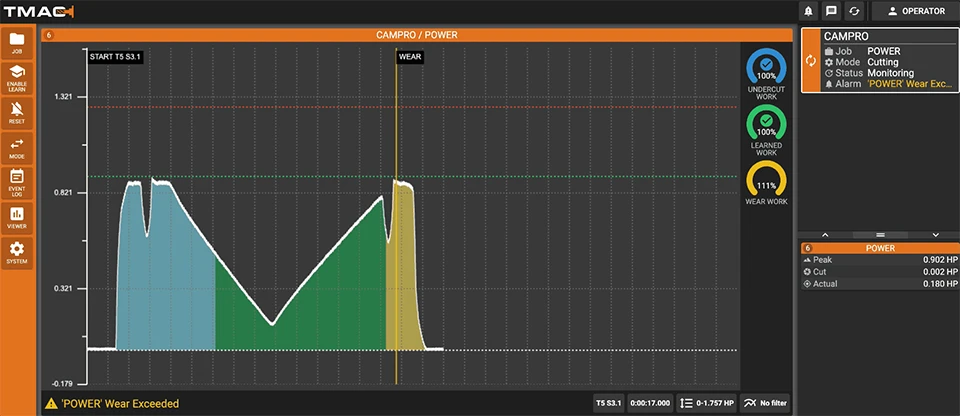
Conclusion
Tool wear is more than a technical detail—it quietly shapes precision, cost, and machine health. From flank wear that roughens surfaces to cracks that spread unseen, its impact grows until production falters. That is why early identification matters: changes in surface finish or spindle load often signal deeper issues. This article showed how wear takes different forms, how its causes and consequences intertwine, and how control through tool choice, parameters, cooling, and monitoring can turn tool wear from a constant risk into a manageable, predictable process.
Behind every effort to control tool wear is the role of the machine itself. Precision, rigidity, and stability determine how tools perform, how heat is managed, and how long cutting edges can last. That is why advanced CNC equipment is more than just hardware—it is the foundation for consistent results. At Rosnok, this principle guides the design of our CNC lathes, machining centers, milling machines, and other metal-cutting solutions. Built to deliver accuracy and reliability, these machines provide the stable platform that allows cutting tools to achieve longer life, better performance, and consistent quality across demanding industries.
